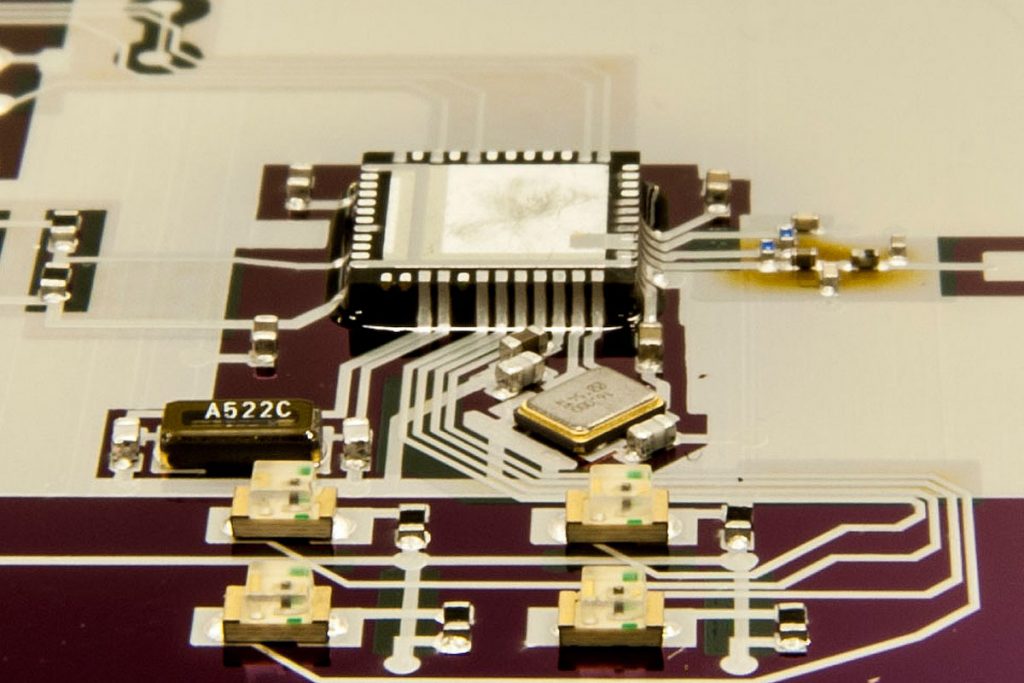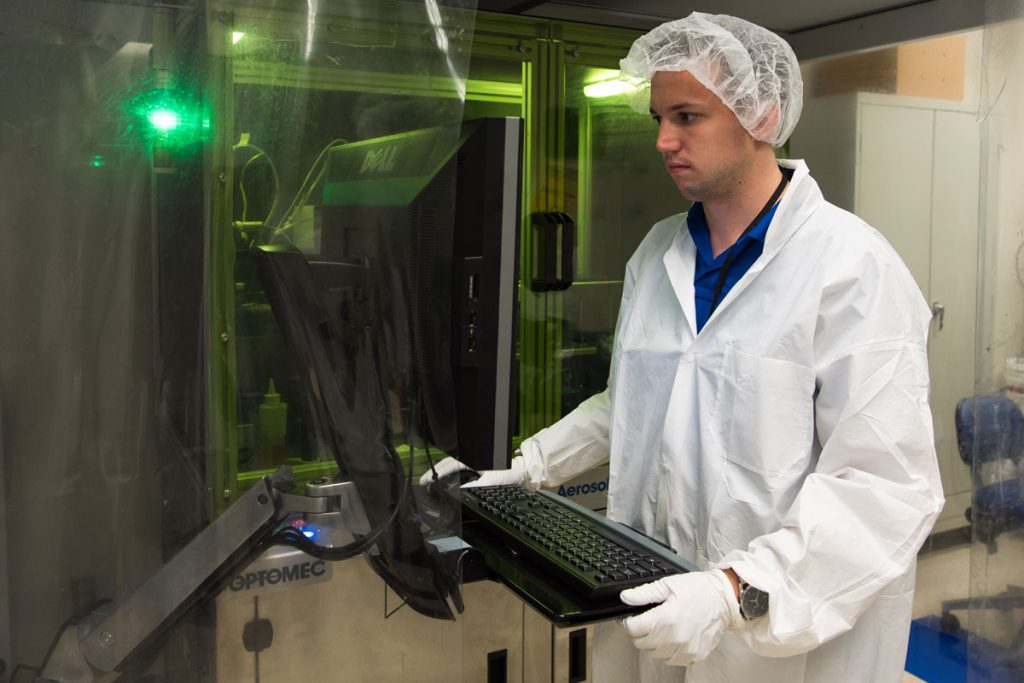Aerosol jet printing (AJP) is a technique for spraying metal-based inks developed by industrial manufacturer Optomec. Its ability to adhere to readymade surfaces and make multimaterial objects makes the technique highly desirable in the consumer electronics market, where demand for device prototypes is at an all time high.
To assess AJP in practice, and better understand its potential, a team at Draper Laboratory have performed a test based on the technology’s ability to replicate part of a wireless Bluetooth transceiver.

Low-cost multimaterial electronics
Draper Laboratory is a not-for-profit engineering research and development organization based in Massachusetts. As part of the America Makes program, the lab has been working on A Low-cost Industrial Multi 3D System for 3D Electronics Manufacturing” in collaboration with the University of Texas at El Paso (UTEP), Northrop Grumman, Lockheed Martin, Boeing and Honeywell Aerospace.
Linked to the program’s undertaking, Draper principle technical staff Peter Lewis and Brian Smith have written a report on AJP technology alongside associate professor Robert White from the Department of Mechanical Engineering at Tufts University.
Traditional electronics manufacturing is not enough
According to Smith, the conventional approach for electronics manufacturing is inadequate to meet market demand.
Smith says, “Product designers are eager to shorten the time it takes to go from concept-to-prototype-to-test in large part because their customers are asking for it. If your market is looking for products in more variety, with varying capabilities and in different form factors, your product designers are on the hook to rapidly churn out prototypes.”
“That’s not easy with the current approach to electronics manufacturing.”
A good example of the kind of components undergoing redesign in new electronic products are Bluetooth modules, that are becoming increasingly prominent in the development of wireless headphones and other peripherals.

Days between concept and prototype
In replicating a section of a Bluetooth PCB Lewis, Smith and White were astounded at how aerosol jet printing is able to dramtically reduce the production process of a completly re-designed component.
White comments, “Among all of our findings, we were most surprised to find that the 3D multi-material printer reduced the concept-to-prototype fabrication time for a microprocessor from many weeks and even months to just a few days.”
In space, energy and defence
Through Optomec, aerosol jet printing has been gaining attention in a number of high value industries, including aerospace and power generation.
At GE the technology has been used to 3D print strain sensors onto the surface of metal turbines blades for gas energy generators. 3D Printing Industry EIC Michael Petch presented the technique to official at NATO’s Allied Command Transformation event in 2016.

NASA has also awarded a contract to Optomec to enable the development of its Adaptive Laser Sintering System (ALSS) that will facilitate 3D printed electronics of prefabricated parts in space.
Draper Laboratory technician Brain Smith concludes, “Without a doubt, AJP technology results in electronic systems fabrication with much greater versatility.”
More methods and materials news can be found on the 3D Printing Industry Facebook/Twitter. For regular updates, sign up to our free newsletter.
Register for 3D printing jobs here.
Featured image shows Draper’s unique 3D aerosol jet printed microprocessor. Photo via Draper Laboratory.


